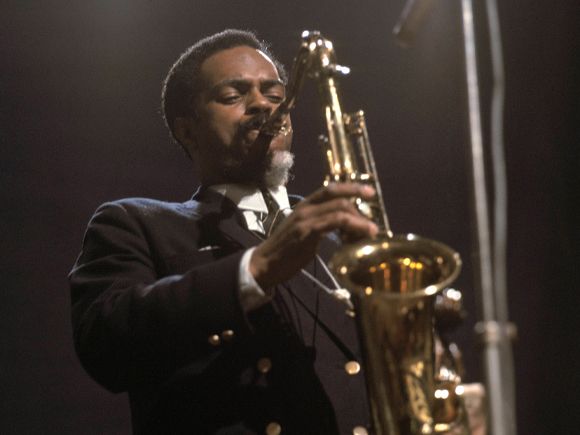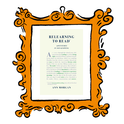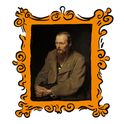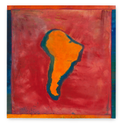The art of writing jazz biography is, these days, a race against time. A mere decade and a half ago, modern jazz pioneers such as Ornette Coleman, Dave Brubeck and Lee Konitz were not only willing to talk, but sought to untangle misunderstandings about their music and to put their legacy on the record. Time, after all, was running short—to speak up before it was too late.
Now the generational tide has turned. Not only have nearly all those essential figures who incubated the jazz revolutions of the 1950s and 1960s died, but their musical associates, agents, record producers, club owners—all the people that a biographer needs to interview—have also been spirited up to the great jam session in the sky. Classic rock memoir might seem like a boom business at the moment, but it is set to run up against the same hurdles within the next 10 to 15 years.
Aidan Levy’s Saxophone Colossus: The Life and Music of Sonny Rollins and Richard Koloda’s Holy Ghost: The Life and Death of Free Jazz Pioneer Albert Ayler traverse these challenges in style, surveying two titans of modern jazz at a time when serious, scholarly jazz biographies are becoming increasingly rare—and, in the process, ensuring that these foundational histories aren’t lost from the story of popular culture as a whole.
With Koloda’s book, the clue to its success lies in its title. Ayler’s suicide—his body was found floating in New York’s East River on 25th November 1970—was the final act of a life defined by both mystery and his knack for creating foward-looking art from older sources that many people had forgotten existed, such as ancient hymnody, spirituals and gospel. As Koloda describes Ayler’s unique approach to the saxophone, unpicking landmark albums such Spiritual Unity, Ghosts and In Greenwich Village, as well as the ups-and-downs of his personal life, you know this is not going to end well.
By contrast, Levy’s subject—the revered tenor saxophonist Sonny Rollins—is still living and, although now 92 and retired from performing since 2014, has much to contribute. But this doesn’t mean that Rollins lacks enigma. Why did he, at the height of his powers, temporarily stop performing in public in 1959 and, for two years, practise his instrument underneath Williamsburg Bridge, often for 15 hours a day?
Another question that has long intrigued me is explicitly musical. Whereas Rollins’s close friend John Coltrane moved towards a music of ferocious, passionate freedom, Rollins was always slightly more… guarded. In this respect, the counterpoint with Ayler proves timely. The impact Coltrane’s music made on the young Ayler was transformational, and it was Coltrane who arranged for Ayler to be signed to his record label, Impulse. Then the pupil became mentor, as Coltrane learned from Ayler’s approach to free jazz, which led his drift away from jazz of regular pulse and recognisable harmonic patterns.
Rollins, too, went through a period of letting free jazz—what they called at the time “The New Thing” or “Fire Music”—inform his work, but with one fundamental difference. Ayler’s and Coltrane’s later music shredded the rulebook as defiantly as James Joyce smashed conventional narrative form. But Rollins managed to subvert the same rules and embrace freedom while also remaining (generally) faithful to traditional ideas of song form, pulse and improvisation—which made him some sort of magician. How did he achieve that?
Levy goes some way to answering that question, and many others, through sheer weight of research: his book sprawls over 725 pages and is so bulky that the source notes have been placed online. But, much like his previous book on Lou Reed, it’s also compulsively readable, with a pacey narrative that belies its monumentalism. This is a very current jazz biography, perhaps even state of the art. It’s certainly different from the ones I read when finding my feet in the mid-1980s. Back then, one would hear about historically crucial albums by Charles Mingus or Thelonious Monk, but actually hearing those albums could be quite a different matter—especially if, like me, you lived outside of London, in a backwater in the northeast of England. I relied on biographies to effectively stand in for albums I assumed I’d never encounter. They just had to give me something; it almost didn’t matter how much.
But now that every album you could reasonably hope to hear can be played at the click of a mouse, the jazz biography must shoulder different responsibilities. However well I knew the nuts-and-bolts of Rollins’s music, Levy made me realise how little I knew about the man—and how much the musical minutiae were informed by his background and his political awakening as a teenager. You could be forgiven for thinking, from reading other histories, that all Rollins’s experiences were framed by New York City. He was born in Harlem on 7th September 1930 and, during his childhood, pounded the same sidewalks as his musical heroes, who included Ellington and the tenor saxophonists Coleman Hawkins and Lester Young.
But circumstances could easily have been different. Rollins was born shortly after his family migrated to the city from the Caribbean island of St Croix. His grandfather Stedman (who was refused entry to the US) had been a singer on the island, specialising in an embryonic form of calypso called quelbe. All Rollins’s siblings were born before his family made their move, and his family’s cultural reference points were overwhelmingly Caribbean. And so that question I raised earlier, about Rollins’s later instinct for musical freedom, starts to answer itself. His most famous compositions, such as “St Thomas” and “Don’t Stop the Carnival”, turned West Indian tunes into vehicles for improvisation without cluttering their crystalline forms with the harmonic obstacle courses typical of modern jazz. Rollins’s compositions, perched in this fertile hinterland between the Caribbean and New York, mapped exactly on to his background.
Now that practically any album can be played at the click of a mouse, the jazz biography must shoulder different responsibilities
The quartet Rollins led in 1962 pushed as far into free jazz as he cared to go. The album they recorded live at The Village Gate in New York, titled Our Man in Jazz (issued in much-expanded form later as Complete Live at The Village Gate) became something of a Trojan horse. With a setlist that included standards by Harry Warren, Jerome Kern and Rodgers & Hart, this clearly wasn’t the increasingly free music that Coltrane was feeling his way inside that year. No—the freedom that Rollins proposed was quite different. His method was to improvise by opening up networks of association. Tunes were made to abruptly rewind around their own structural axes, or to start up again in a completely different style or tempo. Rollins diced up motifs and deconstructed melodic arcs into open-ended streams-of-consciousness; his performances didn’t necessarily need definitive beginnings, might have had multiple endings, with middles that likely kept floating away from the centre.
As Rollins moved into the 1970s and 1980s, and his muse led him to improvise over regular pulses and grooves, there were those who felt that he had retreated on the promises of his 1960s music. Something else had happened, too. Rollins became something of a mystic, who could be relied upon in interviews to talk about music in spiritual terms, as though higher forces were taking care of matters whenever he put his instrument to his mouth. It always struck me as unfortunate that, once his words had been tossed around the journalistic salad-mixer, a musician who had such high intelligence could come across as too New Age-y for comfort. Levy’s book offers a fantastic corrective to that perception. We learn about how deeply Rollins’s teenage soul was stirred by a (communist-affiliated) summer camp that he attended in Wingdale in upstate New York, and how inspiring political thinkers such as Marcus Garvey and WEB Du Bois were to him in his early years, as he awakened to racial injustice.
We also learn how hard, remorselessly so, Rollins practised his saxophone. Habits formed during childhood, when he would play regularly for 10 hours a day, continued into his professional career. The Williamsburg Bridge episode, the subject of much mythologising, represented a complete musical and personal reboot. I hadn’t appreciated the depth of Rollins’s personal troubles during this period: the drugs, a prison sentence, checking in to a rehab centre. The bridge was never about rehearsing what he might play at a gig. Far from it. During this period, Rollins rethought his approach to life; to what he ate, to exercise, to absorbing himself in the cleansing rituals of Rosicrucianism. Those sessions were about learning, once again, to prepare for the unprepared; liberating those networks of association around which he improvised.
* * *
Williamsburg Bridge connects lower Manhattan to Brooklyn, where Albert Ayler’s body was found in 1970, near Congress Street pier. Ayler and Rollins hover in the background of each other’s stories. Early on in Ayler’s career, at a gig in Cleveland, he tried to sit in with Rollins’s group, “but he couldn’t get up there and mess with Sonny, who was playing his ass off,” one witness proclaimed. Following Ayler’s death, which happened to coincide with Rollins taking another sabbatical, this time at an ashram in India, Rollins was presumed to be still living—but nobody could be quite sure.
Richard Koloda’s book—a quicker read, no index, lots of verbatim quoting of reviews from newspapers and magazines—can’t quite match the polished finish of Levy’s, but perhaps that is understandable. Levy enjoyed the huge bonus that Rollins’s papers and diaries have been diligently archived, whereas Ayler’s chaotic life and destructive tendencies would make any biographer’s job far harder. The primary source here is Ayler’s brother Donald, who played trumpet in Albert’s groups and himself died in 2007. Personal details—Ayler’s often cruel treatment of women and his musicians, including at times Donald—are never soft-pedalled, and we read as definitive an explanation of Ayler’s final hours as we’re ever likely to get. Koloda works as a lawyer by day, and there’s a definitive sense of him laying out evidence, then leaving others to judge.
Musically, though, I wish Koloda had sometimes been bolder in his assertions. Ayler drummer Milford Graves observes that this music needed to be experienced, not overly analysed. Nevertheless, over-analysis is absolutely the music biographer’s job. The hollering, shrieking group improvisations that Ayler unleashed still have the power to unsettle—shock, even—because they deliberately upended cherished ideals of musical nicety. That these blowouts invariably invoked old hymns and spirituals only adds to their enigma. They summoned up a period in history before jazz existed, before stampeding into improvisations that were speculative, from an imagined future. Koloda knits together a faithful narrative of Ayler’s life and death, but questions about how he achieved these musical sleights-of-hand go unanswered.
Ayler might have found the notion of perpetual mystery gratifying, but mystery is also a constraint. Partly because of his longevity, but also because his music was more approachable, Rollins retains a visibility that Ayler never had. He lent his sound to the Rolling Stones’s 1981 album Tattoo You and now, as a wise old owl, has become the conscience of modern jazz. For younger saxophonists, such as Rob Brown and Darius Jones in the US and Shabaka Hutchings and Soweto Kinch here in the UK, the musical and life lessons of the 1960s’ New Thing remain a point of reference, a yardstick against which to measure their own work.
Free jazz also informs albums such as rapper Kendrick Lamar’s milestone To Pimp a Butterfly from 2015, and his more recent Mr. Morale & the Big Steppers. The improvisational elasticity of Lamar’s music, the knowhow to knit together diverse beats and forms into a unified whole, owes much to figures like Rollins, Coltrane and Ayler. Indeed, Lamar’s saxophonist of choice, Kamasi Washington—who scored a hit of his own with the 2015 album The Epic—is a devoted Rollins disciple. Writing jazz biography today might be a race against the clock, but it is a task that relates—closely—to the now.














